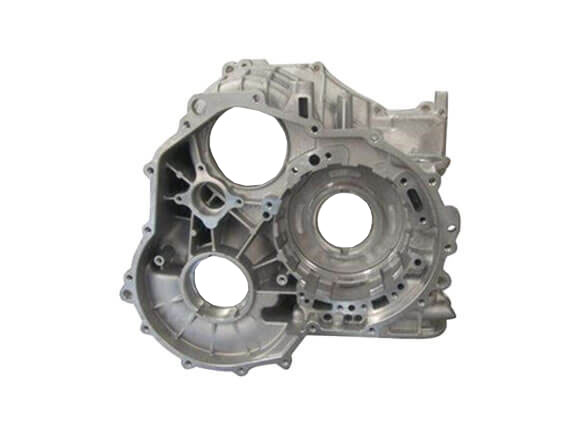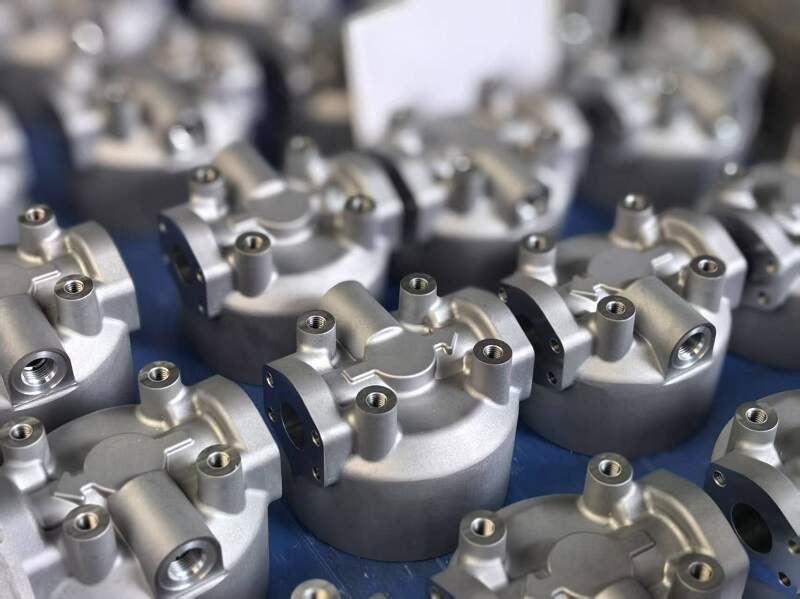Aluminum Casting Techniques: a Deep Dive Into Materials and Techniques for Success
Aluminum casting techniques play a necessary duty in production. Various techniques exist, each fit to various applications and demands. Sand casting is favored for bigger parts, while die casting is understood for its precision in high-volume production. Investment casting uses detailed styles with remarkable finishes. Understanding these distinctions can considerably impact job results. aluminum casting. Picking the suitable approach is not constantly uncomplicated, leading to essential factors to consider that must be discovered further.
Understanding Aluminum Casting: A Summary
Aluminum casting is an essential production process employed across various industries to develop complex parts with high precision. This technique entails putting liquified aluminum right into a mold and mildew, permitting it to take the form and strengthen of the preferred part. The versatility of aluminum, incorporated with its corrosion-resistant and lightweight residential or commercial properties, makes it an ideal choice for applications in automotive, aerospace, and customer items.
Different casting techniques exist, each suited to certain requirements and task scales. Variables such as mold and mildew products, cooling prices, and the intricacy of the design play a significant duty in figuring out one of the most reliable strategy. In addition, the buildings of the aluminum alloy utilized can impact the end product's surface, strength, and toughness surface.
Understanding the fundamentals of aluminum casting allows manufacturers to enhance production processes, lower waste, and guarantee premium output, which is necessary in today's open market.
Sand Casting: Methods and Applications
Among the different strategies used in aluminum casting, sand casting stands out because of its versatility and cost-effectiveness. This method entails creating a mold from a mixture of sand and binder, which can be shaped to accommodate intricate layouts. Once the mold and mildew is ready, liquified aluminum is poured into it, allowing for complex functions and details to be captured.
Sand casting is especially valuable for producing big components and low-volume manufacturing runs, making it optimal for automotive elements, equipment components, and artistic sculptures. The method also suits a variety of aluminum alloys, enhancing its flexibility in numerous applications. In addition, the usage of sand as a mold and mildew product enables simple improvement and reuse, adding to environmentally lasting techniques. Accomplishing high dimensional accuracy can present difficulties, demanding experienced workmanship and cautious control of the casting procedure. On the whole, sand casting stays an essential technique in aluminum foundries worldwide.
Die Casting: Precision and Efficiency
Die casting is a very reliable method of producing aluminum parts with outstanding dimensional precision and surface area coating. This procedure entails requiring liquified aluminum into a specifically machined mold under high pressure, which permits elaborate designs and minimal product waste. The fast cooling of the alloy within the mold and mildew results in a solidified component that frequently calls for little to no additional machining.
Die casting is specifically useful for high-volume production runs, where consistency and rate are paramount. It sustains the creation of intricate geometries, making it appropriate for numerous applications, including vehicle, aerospace, and durable goods.
Moreover, the process can fit different aluminum alloys, improving the mechanical residential properties of the completed products. With its capability to produce lightweight yet long lasting parts, die casting sticks out as a preferred method in modern-day production, delivering both precision and performance in aluminum casting.
Financial Investment Casting: Detail and Complexity
Financial investment casting, also recognized as lost-wax casting, is a accurate and functional approach for creating intricate aluminum parts. This method is especially valued for its capability to create intricate geometries and great details that are typically unattainable via various other casting approaches. The procedure starts with a wax pattern, which is coated in a ceramic shell. When the covering solidifies, the wax is dissolved, leaving an in-depth mold for aluminum pouring.
The advantages of financial investment casting include remarkable surface area coating and check these guys out dimensional accuracy, decreasing the demand Clicking Here for substantial machining later. It is especially valuable for little to medium manufacturing runs where precision is essential. This technique accommodates numerous aluminum alloys, enhancing its applicability across industries. Precision aluminum casting. Ultimately, investment casting sticks out for its capability to deliver both visual allure and functional performance in aluminum components, making it a preferred selection for designers and engineers seeking complex options

Selecting the Right Method for Your Task
Just how can one identify one of the most appropriate aluminum casting technique for a details job? The selection process rests on a number of vital factors, including the complexity of the design, the desired surface area finish, and production quantity demands. For elaborate designs, investment casting typically confirms helpful because of its capacity to capture great information. On the other hand, sand casting may be chosen for larger, less intricate parts, providing cost-efficiency and flexibility in manufacturing.
In addition, considerations pertaining to tolerances and mechanical residential or commercial properties of the his response final item are vital. For high-performance parts, die casting may be the finest option, as it supplies remarkable dimensional precision and surface area top quality. Furthermore, recognizing the material residential properties and compatibility with the chosen technique is essential for guaranteeing the success of the task. Ultimately, a comprehensive assessment of these aspects will assist the decision-making process, resulting in the most effective aluminum casting method for the certain task available.
Frequently Asked Questions
What Is the Environmental Influence of Aluminum Casting Techniques?

Just How Can I Boost the Surface Area Finish of Cast Aluminum?
To improve the surface coating of cast aluminum, one can utilize strategies such as sandblasting, brightening, and applying layers. Proper mold and mildew design and temperature control additionally substantially improve the last surface high quality of the actors item.
What Security Precautions Should Be Taken Throughout Aluminum Casting?
Throughout aluminum casting, important security preventative measures include putting on protective gear, guaranteeing correct air flow, making use of fire-resistant products, preserving a secure distance from molten steel, and adhering to tools security protocols to stop injuries and crashes.
How Do I Repair Typical Casting Defects?
To fix common casting problems, one ought to examine the mold for damages, analyze the alloy structure, check pouring temperature level, change cooling rates, and warranty proper airing vent to minimize air entrapment and boost casting top quality.
What Are the Costs Connected With Various Aluminum Casting Techniques?
The costs related to different aluminum casting methods differ considerably, influenced by elements such as product expenses, labor, tools, and manufacturing scale. Budget plan considerations are necessary for choosing one of the most suitable casting approach for specific tasks.
Sand casting is favored for bigger components, while die casting is understood for its precision in high-volume production. Among the different techniques utilized in aluminum casting, sand casting stands out due to its adaptability and cost-effectiveness. Die casting is a highly effective approach of producing aluminum components with remarkable dimensional precision and surface coating. Financial investment casting, likewise understood as lost-wax casting, is a versatile and specific technique for creating intricate aluminum parts. Just how can one identify the most ideal aluminum casting technique for a specific project?